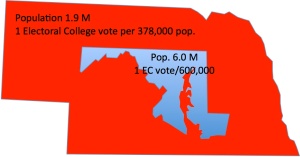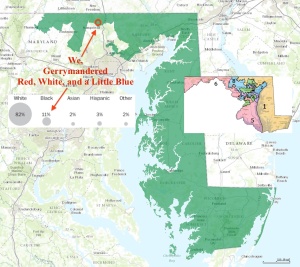Archive for the ‘Sports’ Category
Maryland, Nebraska, and Rednecks
This Saturday the Maryland football team travels to Nebraska’s Memorial Stadium in a mock-battle marked by mutual incomprehension. Perhaps I can translate. I grew up on a central Nebraska farm and attended the University, three years in Lincoln and one in Omaha. After post-graduate work in Colorado, I moved to Maryland 36 years ago and have been here since. I returned to Nebraska frequently through the years to visit parents (now gone), other immediate family, and longtime friends. As a prodigal who took his modest intellectual gifts far from home to be squandered in what E.E. Cummings called the “wheelmine” of scientific endeavor, I have an expatriate’s objectivity and nostalgia about Nebraska. In Maryland, after all these years, I still chafe at some longstanding laws and practices I estimate would not be tolerated by Nebraskans. I am still a Cornhusker fan, paying extra each month for the Big10 Network so I can see more of the games.
Marylanders generally have no clue that Nebraska has a beautiful, expansive, and diverse landscape; where Marylanders have seen Nebraska at all, it has been as the interminable east-west drive along I-80, perceived as corn, corn, and flat. On TV, they see a stadium full of red-clad Cornhusker fans (rubes, surely). They imagine wrongly that Nebraska is culturally very much like Kansas, Oklahoma, and Texas, insistently literal at a public-policy level in interpretation of Genesis, Leviticus, and cherry-picked phrases from the NT gospels. Marylanders would rank Nebraska near the bottom of tourist destinations, and it doesn’t help that it takes less time and money to get to LA, Seattle, London, or Paris than to the heart of Nebraska.
Nebraskans, in turn, imagine Maryland to be another overcrowded piece of a vague mid-Atlantic geography pockmarked with distressed cities where it is dangerous to walk the streets. Nebraskans, mostly derived from Euro-immigration in the 19th century, have little of Maryland’s fascination with Colonial or Civil War history. Maryland is imagined as an urban and suburban place adjacent to the widely despised seat of federal government in DC. Its bay, rivers, seacoast, mountains, and farmlands—its abundance of rural and even wild areas—are discordant with the caricature. I, for example, live 30 miles (45 minutes on a good driving day) north of my work in downtown Baltimore; we have 17 acres, mostly wooded but also with meadow. We have two goats, three barns, two tractors, a century-old grist mill, a large garden, and much else of rural character. We’re a quarter mile from a put-in-spot for a canoe, on a large reservoir. Deer are an even bigger road hazard than texters, and twenty-some years ago I nearly totaled my car ($6200 damage at the time) by hitting a black bear near a golf course in Frederick, MD.
Maryland is a reliably “blue” state, one of the last to fall in any Republican landslide election. Nevertheless, I am gerrymandered into the redneck portion of Maryland, the one House district (of 8 total) into which the highest proportion of likely Republican voters are gathered. The shape (see illustration) does full justice to the word gerrymander, derived in part from the shape of a salamander; and it exemplifies that a Democratic statehouse is as prone to gerrymander as a Republican one (though Republicans have generally been far more successful in this dark art … see Texas and the fact more people voted for Democratic than Republican House members in 2014, but the Republicans maintained a yuuuge majority in the House of Representatives).
But wait, rednecks in Maryland? Don’t get me wrong, I grew up with rednecks. I hang out with rednecks at Tractor Supply, Home Depot, WalMart. I buy goods and services from them all the time, appreciating their expectation of a fair and honest transaction, value for value. I love rednecks for their unabashed joie de vivre (and their refusal to call it that), their carpe diem risktaking (anything motorized, speed, aerial stunts, etc.), their maintenance of innumerable folk traditions, their self-deprecating humor about their own redneck attitudes. Hell, I even channel my inner redneck from time to time—in moderation—though I’m not inclined to go on full-out redneck binges like hunting snapping turtles barehanded in a bog.
In Maryland, rednecks are concentrated along the northern border of the state (from Appalachia to the ocean) and in the farming and seafaring regions east of the Chesapeake Bay. In Nebraska, there’s good redneck representation throughout the state, but predominantly outside Lincoln, Omaha, and their suburbs.
In my observation, rednecks were formerly divided almost equally between political parties. But rednecks of the Old Confederacy flipped from Democratic to Republican when Lyndon Johnson “sold them out” with civil rights legislation, after which Nixon (and successors) welcomed them back (with an unreflective person’s immunity to irony) to “the party of Lincoln.” Redneck factory workers, who once appreciated the Democratic party’s support for unions, have become largely non-unionized and unemployed, growing resentful of “elites” who went off to college instead of doing “real” and hard work. Farmers like my father (born 1911) who remembered Democrats as the party who gave them rural electrification (over Republican opposition) and price stability have mostly passed from the scene. It’s hard enough to find a redneck with a steady desk job in an organization or “system,” harder yet to find one with a PhD. Rednecks may incline more toward libertarianism than what passes for modern conservatism, but were never social or religious liberals, never multicultural or global in their views, are vulnerable to the fiction that there’s a conspiracy to take their hunting and target-practice weapons away: they have migrated en masse toward Republican propaganda.
Meanwhile, blue Maryland non-ironically calls itself “the Free State” partly because of its colonial tradition of religious tolerance (especially for Catholics, but also Quakers) and partly because of its 1919 opposition to alcohol prohibition, a States’ Rights issue. The irony, of course, is that Maryland remained a slaveholding state until late 1864, exempt—because of its tenuous loyalty to the Union—from Lincoln’s Emancipation Proclamation.
So, a red state and a blue state are now thrown together as immigrants to the Big 10, Nebraska seeking economic refuge from the Big 12, and Maryland from the ACC. Big-time sports make strange bedfellows. This is opportunity for red and blue—high plains and eastern seaboard, colonial “Old America” and western frontier Heartlands—to understand one another on a more personal level. There’s a lot to like in each. May our citizen-voters show each other as much respect as our sports athletes do.

